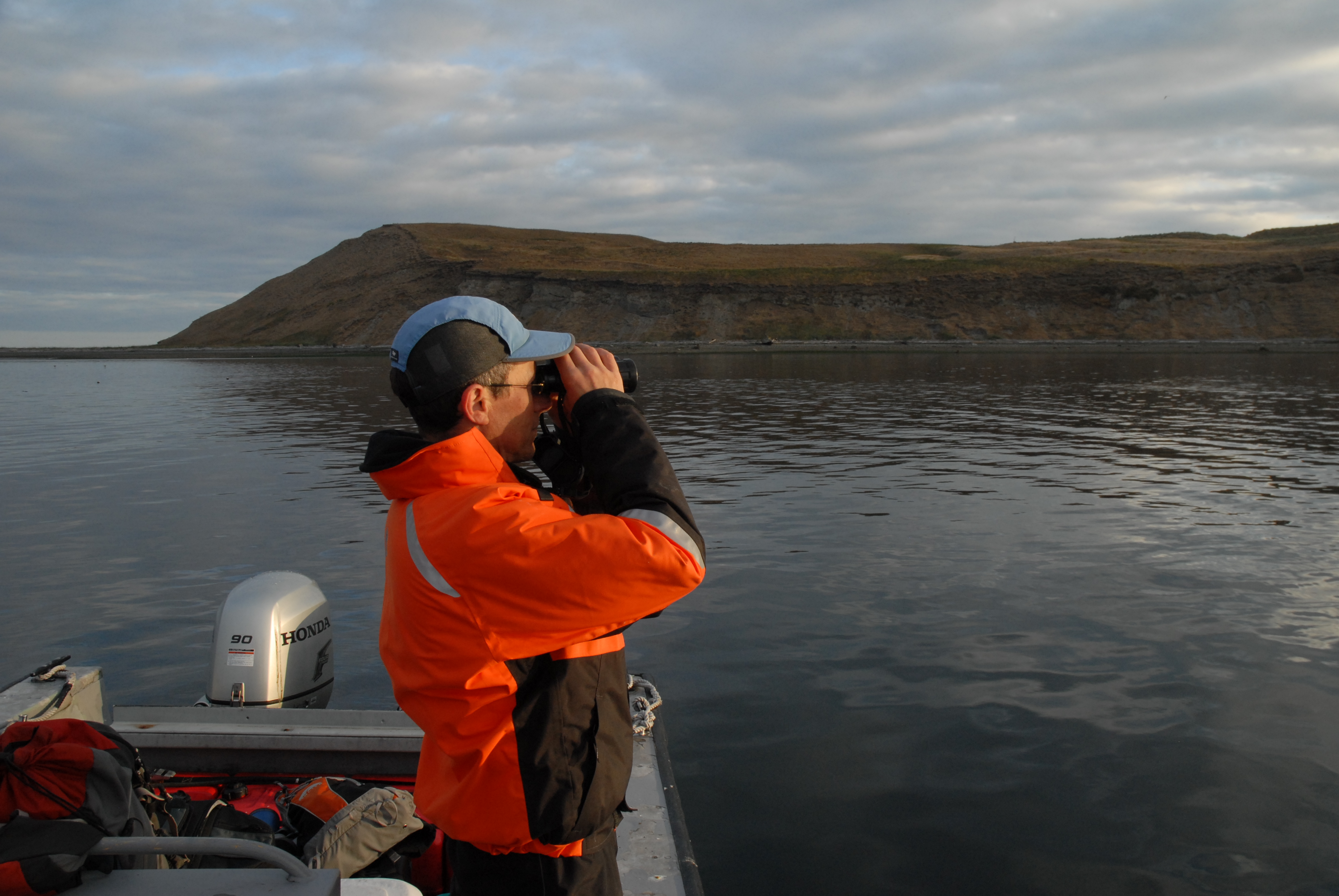Marine bird science in Puget Sound
Birds serve as useful indicators of ecosystem change and ecosystem health, biodiversity, condition of habitats, and climate change. Many people and organizations have their eyes on marine birds in Puget Sound.

Who monitors marine birds in Puget Sound?
 Puget Sound Seabird Survey
Puget Sound Seabird Survey
The Puget Sound Seabird Survey (PSSS) is a citizen-science survey managed by Seattle Audubon that empowers volunteer birdwatchers to gather valuable data on wintering seabird populations in Puget Sound and the Strait of Juan de Fuca.
Seabird research program at the Washington State Department of Fish and Wildlife
Washington Department of Fish and Wildlife's seabird research is focused on assessing the status and trends of both common and rare species of seabirds, identifying potential mechanisms for decline, and assessing the health of Puget Sound.
Washington State waterfowl management program
Washington Department of Fish and Wildlife has been collecting and analyzing waterfowl management information from banding and marking programs.
 Whidbey Island Guillemot Research Group
Whidbey Island Guillemot Research Group
Whidbey Audubon citizen science project dedicated to the research, education and protection of the Pigeon Guillemot. Based on Whidbey Island in north Puget Sound.
 Nisqually Reach Nature Center
Nisqually Reach Nature Center
Volunteers are actively participating in two citizen science surveys under the auspices of the Citizen Stewardship Committee of the Nisqually Reach Aquatic Reserve. The surveys are collecting data on Forage Fish, Pigeon Guillemot Breeding, and Visitor Use at Luhr Beach.
 COASST – Coastal Observation and Seabird Survey Team
COASST – Coastal Observation and Seabird Survey Team
A 17-year-old rigorous citizen science project housed at the University of Washington. COASST trains coastal residents in their communities.
Washington Audubon
Audubon Washington inspires diverse audiences to conserve natural ecosystems and build healthy communities for people, birds and other wildlife.
NOAA
The Marine Mammal and Seabird Ecology Team conducts critical research on Southern Resident killer whales (SRKWs), other marine mammals, and seabirds in the Pacific Northwest.
What organizations protect birds and help them?
Pacific Birds Habitat
Advancing avian habitat conservation since our origins as the Pacific Coast Joint Venture in 1991. Pacific Birds is a partnership driven organization that thrives on engagement and collaboration.
Washington Audubon
Audubon Washington inspires diverse audiences to conserve natural ecosystems and build healthy communities for people, birds and other wildlife.


